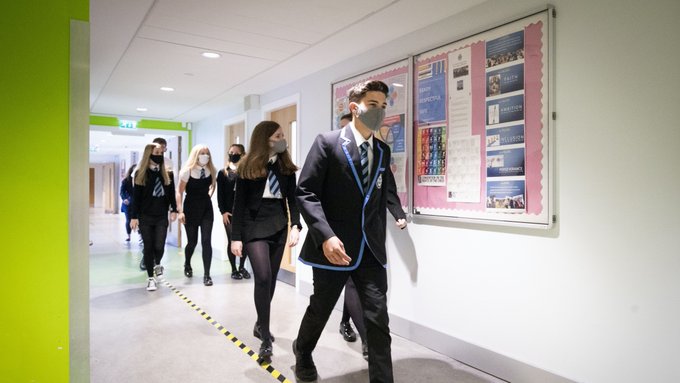 CHILDREN play “a larger role in transmission of the virus than we previously realised”, according to the North’s Chief Scientific Adviser.
CHILDREN play “a larger role in transmission of the virus than we previously realised”, according to the North’s Chief Scientific Adviser.
Professor Ian Young has told the Assembly’s Health Committee that this evidence is more recent and comes from studies taking place across the UK.
Young children are “somewhat less likely to become infected to to transmit the virus,” he added.
However, he pointed out that children are more “likely to be asymptomatic” but can “inadvertently bring the virus into the household” and spread it to adults who may then develop symptoms.
Prof Young said “we have seen a significant number of outbreaks in NI, including some large outbreaks associated with schools”.
He clarified that these have been due to “interactions” between children inside and outside of school.
There have been “larger outbreaks associated with older children attending secondary education,” said the CSA.
Asked if their could be a 24/7 roll out of the new Oxford AstraZeneca, Prof Young said the vaccine will be rolled out “as quickly as can be done”.
The CSA added that the “main limiting factor” in the roll-out, is the “availability of the vaccine to NI rather than the extent to which vaccinators and the 24/7 vaccination service is available”.
“Covid is always going to be with us, we’re never going to move to a world where Covid does not exist, as far as I can see,” sadi the CSA.
He added that it is “quite likely” that individuals may “need to have repeat vaccines after a period of time to retain immunity”.
Rising numbers of Covid-19 cases in the North of Ireland can be attributed to increased contacts rather than the new variant of the virus, MLAs are told.
Prof Young said the two-week relaxation of restrictions and inter-generational mixing at Christmas has been the most significant factor.
“At present our view is that the current numbers can be explained simply by the increased contact patterns and mixing before Christmas,” he says.
“And that any impact of new variant virus is likely to be relatively small.”
He added that the R (reproduction) rate of the virus is now at 1.8.
Tags:




